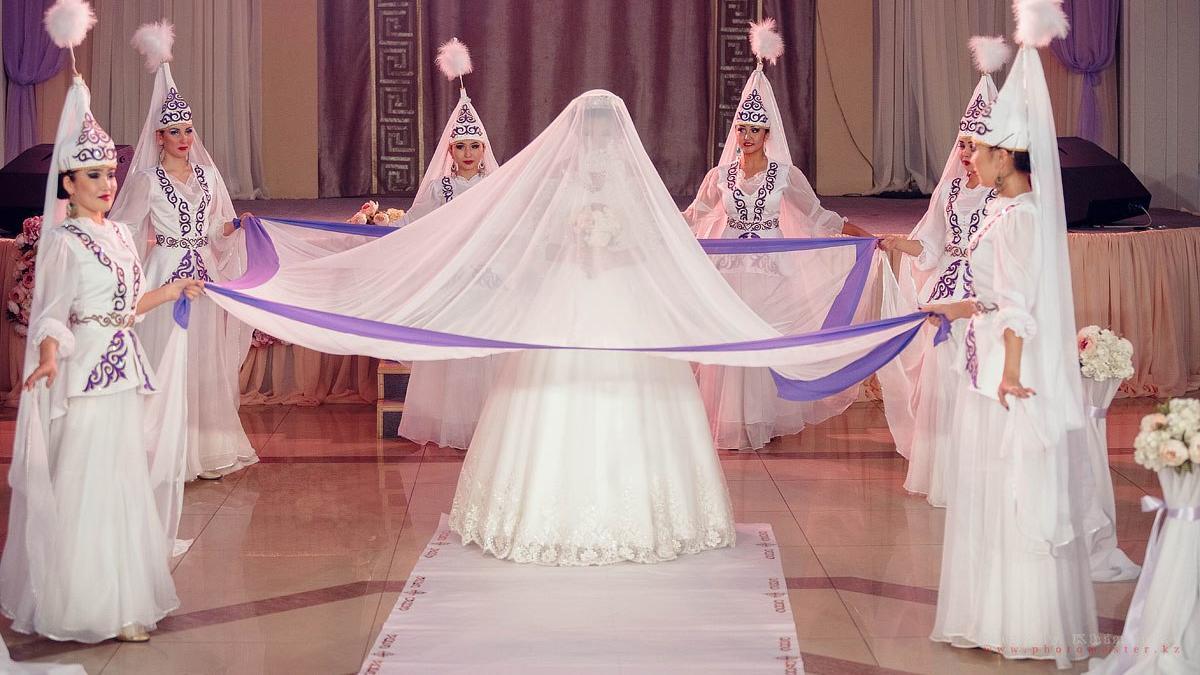ASTANA – Betashar, a centuries-old custom of unveiling the bride, provides insight into Kazakh weddings, uniting families and communities.

Betashar ceremony. Photo credit: photomaster.kz.
Like any significant celebration, Kazakh weddings are filled with traditions and nuances that might seem like something of a mystery for a foreign eye. One such tradition is betashar, the unveiling of a bride’s face, a rite that symbolizes the recognition of the daughter-in-law as a member of the new family.
In 2024, betashar was inscribed on the United Nations Educational, Scientific and Cultural Organization’s (UNESCO) Representative List of the Intangible Cultural Heritage of Humanity.
For Altynai Kadyraliyeva, an expert in Kazakh traditions, the betashar ritual is one of the most beautiful rites in the traditional culture of Kazakhs.
“Betashar symbolizes the new bride’s entry into a new family and is translated literally as ‘bet’ – face, ‘ashu’ – to open. The bride’s face was not shown to anyone without betashar,” said Kadyraliyeva in an interview with Kazinform.
The ceremony is led by a specially invited improviser-akyn, who presents the bride to the groom’s relatives and friends in a song form. In the course of the ceremony, the bride, covered with a white shawl, bows to each of the husband’s family and relatives as the akyn introduces her to them. In return, she receives the elders’ blessings along with money as a gift placed on a special tray.
The rules of tradition have not changed significantly since medieval times when the groom rarely saw his future bride before the wedding.
“Betashar in its modern form has not undergone significant changes, which testifies to its importance in Kazakh culture. However, nowadays, the tradition has been slightly transformed. Recently, many people hold betashar right at the main wedding, after seeing off the bride. This is most likely due to the desire to rationalize the time of relatives and family. Modern betashar is often held in cafes and restaurants, which is evidence of the material well-being of society,” said Kadyraliyeva.
Even young people do not set aside the centuries-old tradition, according to Kadyraliyeva.
“The younger generation of Kazakhs is quite respectful of this rite. In no case do they consider betashar obsolete or unnecessary. It is a holistic and harmonious wedding rite, filled with deep semantic content, where each of its elements is important. Like other wedding rites, it is the basis of our identity, an important element of the cultural code of the nation,” she said.
Betashar is widespread throughout Kazakhstan. It is also a part of wedding ceremonies among other Turkic-speaking nations, such as Kyrgyz, Uzbeks, and Tatars.
Betashar ceremony outside Kazakhstan
Kazakhs who live outside the country also uphold traditions. Some of them see weddings as not only preserving a common cultural heritage but also bringing large, disparate families together.
“I had the unique experience of conducting the betashar in Türkiye. It’s truly remarkable how the Kazakh diaspora abroad makes a lot of effort to preserve their traditions and customs,” said zhyrshy (singer-improviser) Bauyrzhan Kultayev in an interview with Kazinform.
In some communities, betashar is adapted to align with local traditions.
“The groom was a Kazakh from Türkiye, and the bride was from Germany. As I played the dombra, they placed a prayer mat over my left shoulder. I called out the names of relatives, praising them, while they pinned money—mostly Turkish lira—onto the cloth with a needle. This process was unusual for me, as in Kazakhstan, it is customary to place money on a special tray instead,” said Kultayev.
Even when a Kazakh bride marries a foreigner, the tradition is kept intact.
“I had cases when girls married foreigners. For example, one married a Turkish citizen, several married Americans, and there were cases when a girl chose a Norwegian or an Arab. In all those cases, the betashar rite was also performed,” said Kultayev.


